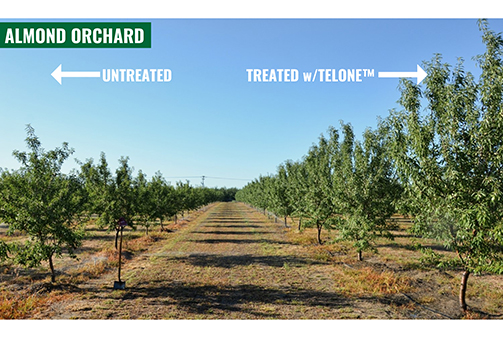What a New Dockworkers Deal Means For the Agriculture Industry
On Friday, Oct. 4, 2024, U.S. dockworkers, from Maine to Texas, returned to work. The 2024 U.S. Port Strike, which began on Tuesday, Oct. 1, 2024, concluded after the International Longshoremen’s Association (ILA) labor union reached a tentative agreement on an increase in wages with shipping companies. For the time being, the strike will be suspended until Jan. 15, 2025, giving the union and shippers, represented by the U.S. Maritime Alliance (USMX), time to hammer out the details and negotiate a new six-year contract.
The strike, which organized roughly 45,000 dockworkers across the U.S. East Coast and Gulf Coast, initially led to strong fears from economists. Many warned that a prolonged dispute, featuring delayed and halted shipments, could lead to certain product shortages and, thereby, increased prices throughout various industries and consumer bases, including those in agriculture and horticulture businesses.
USDA released a statement upon the dawn of the strike on Tuesday:
“The Administration is taking action to monitor and address potential impacts on consumers due to labor disputes at East Coast and Gulf Coast ports. Our analysis shows we should not expect significant changes to food prices or availability in the near term. Thanks to the typically smooth movement through the ports of goods and our strong domestic agricultural production, we do not expect shortages anytime in the near future for most items. Likewise, non-containerized bulk export shipments, including grains, would be unaffected by this strike. For meat and poultry items that are exported through East and Gulf Coast ports, available storage space and re-direction of products to alternative domestic and international markets can alleviate some of the pressure on farmers and food processors.
“We are keeping an eye on downstream impacts in the west, and we will continue to monitor and work with industry to respond to potential impacts. Our Administration supports collective bargaining as the best way for workers and employers to come to a fair agreement, and we encourage all parties to come to the bargaining table and negotiate in good faith—fairly and quickly.”
So, now that the strike is over, what does it mean for the horticulture industry, both in the immediate aftermath and in the future?
Aftermath Effects on Agriculture and Horticulture
Immediate effects of logistical complications from delayed shipments are still likely to affect several industries in the U.S. market, though not nearly to the extent had the port strike extended beyond a week.
As reported by Time, the top products most at risk for shortages and price increases as a result of the strike include:
- Alcohol
- Auto parts
- Chocolate
- Electronics
- Fruit
- Medical supplies
- Shoes
Some of these products fall under the purview of growers, though the effects on all industries that manufacture, ship, and sell these products should likely be minimal due to the short stint of the strike.
However, these industries and more still must reckon with the impacts of Hurricane Helene and the recovery efforts currently underway.
Additionally, dockworkers’ concern for the proliferation and infiltration of automation, artificial intelligence, and robotics is an increasing concern that many industries must grapple with. As proven by the agricultural sector, the proper adoption of automation can help to improve the efficiency and safety of employees. However, the replacement of a workforce en masse by technology, if it ever becomes a viable option for companies in the future, is likely to pose additional labor disputes and tremendous implications for the world economy.
For more, continue reading at GreenhouseGrower.com.









![USDA's Thoughts on the Dockworker Labor Strike [Update]](https://www.growingproduce.com/wp-content/uploads/2016/01/Port-Tampa-Bay_channel.jpg)
